Page 1 of 3
Anyone interested in good clocks
Posted: Wed Jul 27, 2016 3:55 pm
by jkeny
I've followed a clock thread
http://www.diyaudio.com/forums/digital- ... ost4784068over on DIY Audio for a while about creating a very good audio clock & there is finally something of interest emanating.
This group buy of a fully functioning dual clock board has emerged - just supply power & connect clock outputs to clock in of audio device.
I have very good reasons to believe that this will provide top of the range sound as I recently experimented with some clocks that had some of the same characteristics & they improved the sound - yes, you guessed it, with more detail & more naturalness :).
The clocks in this group buy are 20dB better in close-in phase noise which is the important factor for audio. This improvement is huge & although there isn't a direct one-to-one relationship between this 20dB & the audio improvement you will receive, it should still translate into better sound of some order.
The reason I'm posting this is to try to get the number of orders for this board up to a level where he considers it worth his while to assemble it.
It's a €60 purchase for two audio clocks mounted on boards - no soldering or anything else to do - except for me & Nige :) - see here for group buy
http://www.diyaudio.com/forums/digital- ... ost4726498
He's shipping from Italy so shipping costs should not be onerous.
So, come on Sligolad & Tony, you know you want to - another improvement to the Lampizator :)
Re: Anyone interested in good clocks
Posted: Wed Jul 27, 2016 7:31 pm
by Sligolad
Jeeez John you give us way too much credit to think we would have any idea what we would be looking at there :-)
AT-Cut and SC-Cut Crystals, Colpitts-Clapp AT-Cut crystal oscillator board, Driscoll AT-Cut and SC-Cut crystal oscillator board, D&D Daughter board, Oven board for Driscoll SC-Cut crystal oscillator.
Going to try and make some assumptions here to see if I can get a handle on all this.
I should order the following to get a good dual crystal Board for the lampizator;
SC-cut crystal
22.5792 MHz 3rd overtone 1 pc Eur 38.00
24.5760 MHz 3rd overtone 1 pc Eur 38.00
TWTMC-D&D Daughter board Eur 10.00 each
Have I got that right?
If you want to go the Oven route then you order 2x TWTMC-OVN Oven Eur 3.00 each?
Do these drop over the crystals and heat the crystals from the heater copper jacket?
Cheers, Pearse.
Re: Anyone interested in good clocks
Posted: Wed Jul 27, 2016 7:56 pm
by nige2000
forgot about that thread
i got tired waiting for something to happen
id likely be up for two of em
have to do some catch up reading
take it we can run this direct from lifepo4?
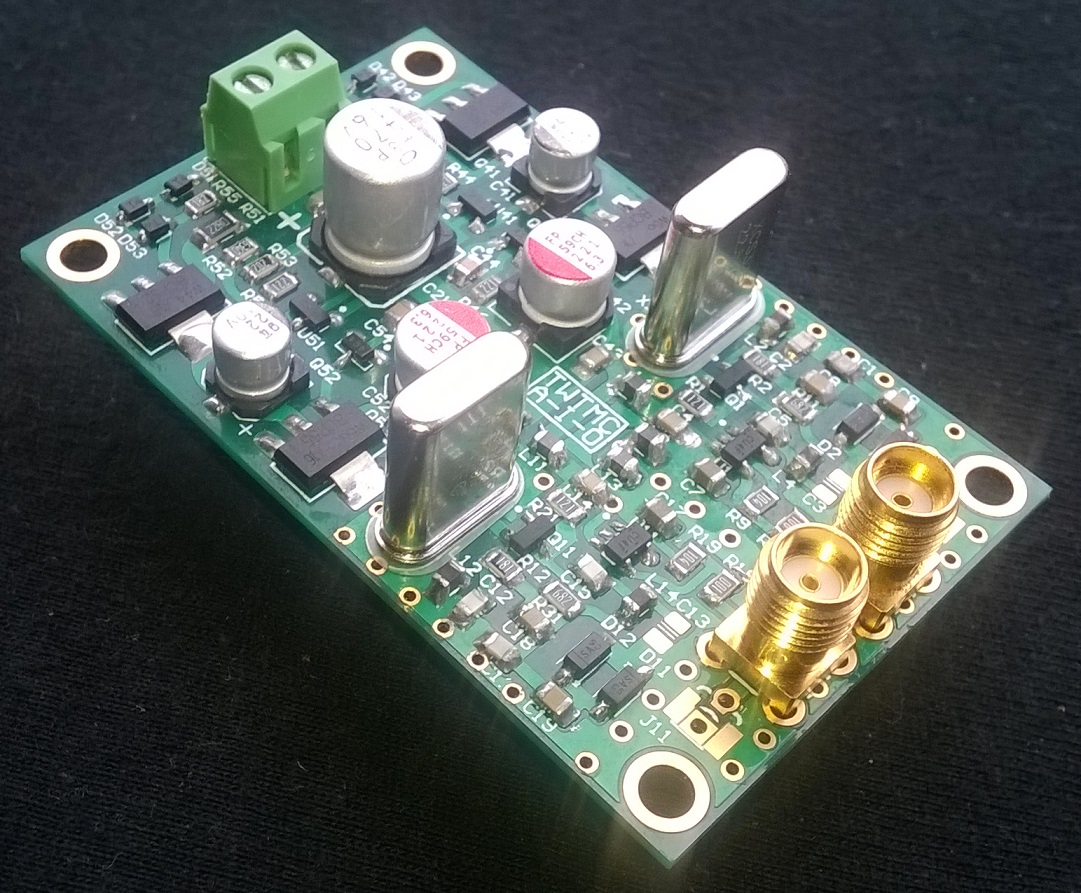
Re: Anyone interested in good clocks
Posted: Wed Jul 27, 2016 8:02 pm
by jkeny
No Pearse, I linked to a non DIY version here
http://www.diyaudio.com/forums/digital- ... ost4784068
It's a board with all you stated already mounted - a 22.XXX & 24.XXX MHz laptec clock, etc - all you have to do is provide power (9V to 12V DC) & connect the board's clock outputs to where your current Lampi 22.XXXX & 24.XXXMhz clocks are. The board is called TWTMC All-in-One
You are already using external clocks - a Dexa clock or something like it, aren't you, Pearse? This is a far better performing option, IMO (& far cheaper)
I thought at €60 to replace your two Lampi clocks was a steal
Now Nige & I would probably hack the board a bit to provide more direct battery power & remove a regulator or two but that's just us :)
Re: Anyone interested in good clocks
Posted: Wed Jul 27, 2016 8:11 pm
by jkeny
nige2000 wrote:forgot about that thread
i got tired waiting for something to happen
id likely be up for two of em
have to do some catch up reading
take it we can run this direct from lifepo4?

Yea, a picture tells a thousand words but when looking at technical stuff a thousand words is often needed :)
I thought you would be interested, alright.
As I said I hooked up a different low phase noise clock last night & the difference was, you know, profound, veils lifted, blah, blah
I had long been wondering if this phase noise at close in (i.e <10Hz) was of importance but never had a clock that I was sure of the measurements in this area. When I heard the difference I went back to that DIY audio thread to see what they had & where they were at. The phase noise < 10Hz is 20dB down from the clock I have which is a measured & specially selected ndk clock & it is already about 20dB down from the standard ndk clock - you know the ones, Nige - the low jitter ones. So on this basis alone, I reckon this €60 clock will be revelatory.
Don't know about powering it from LiFepo4 - I think some jfets needs 5V but can probably use 6.6V. I see a number of regulators & other power stuff on the pcb above the crystals in the pic - maybe, if it works with 6.6V he could dispense with all that power regulation stuff & provide a smaller board for external powering?
Maybe a question or two for Andrea_mori?
We could do our own board without the power stuff but the crystals are $27 each so I don't know how he's doing a dual crystal board already stuffed for €60?
Re: Anyone interested in good clocks
Posted: Thu Jul 28, 2016 12:59 am
by rickmcinnis
This could be good but my instincts are that there is too much circuitry.
I speculate that that extra 10 dB may be achieved by a trick similar to negative feedback and the measurements do not agree with what you hear. I do not mean to sound like one who KNOWS NFB is always bad but the implementation of it requires care. I get the feeling Mori is listening to these as he develops them? But as you can tell I am not quite sure.
Maybe it is laziness or the fact that I tend to think a selected device that is good on its own might well be the better and simpler way to go.
AS it is my clocks are soldered to the pins provided on the SDTRans board. I ask myself why would I want to add a cable here? And connectors? Could be laziness, as I said, based upon the lack of believing we might have not heard the point of diminishing returns when it comes to low frequency phase noise.
It seems boards and crystals are available or did I misunderstand?
Does he need 100 orders of the completed boards to produce them? Which would make sense. At the rate things are going I think it might be awhile before that is reached.
Re: Anyone interested in good clocks
Posted: Thu Jul 28, 2016 1:05 am
by jkeny
rickmcinnis wrote:This could be good but my instincts are that there is too much circuitry.
I speculate that that extra 10 dB may be achieved by a trick similar to negative feedback and the measurements do not agree with what you hear. I do not mean to sound like one who KNOWS NFB is always bad but the implementation of it requires care. I get the feeling Mori is listening to these as he develops them? But as you can tell I am not quite sure.
I don't know what you mean by feedback? The circuitry after the clocks is there for ensuring stability & conferring immunity of interference back to the clock when it is connected to a device that it is driving. Oh & I forgot - squaring the waveform from sinewave to square wave
Maybe it is laziness or the fact that I tend to think a selected device that is good on its own might well be the better and simpler way to go.
AS it is my clocks are soldered to the pins provided on the SDTRans board. I ask myself why would I want to add a cable here? And connectors? Could be laziness, as I said, based upon the lack of believing we might have not heard the point of diminishing returns when it comes to low frequency phase noise.
It seems boards and crystals are available or did I misunderstand?
Yes, you could always build a simple circuit like this Pierce oscillator using these parts - you don't need to use the ufl socket for connecting to the clock - just leave it off
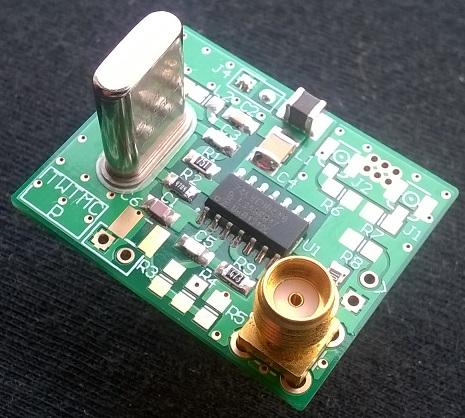
Does he need 100 orders of the completed boards to produce them? Which would make sense. At the rate things are going I think it might be awhile before that is reached.
I'm not sure what his position on it is?
BTW, the big factor in achieving low phase noise at low frequencies (close-in) is in the crystals that are used - the way they are cut, the way they are polished, the cleanliness of the environment, the final packing in the metal can - this is cold welded in a vacuum so as not to introduce any impurities which would contaminate the crystal.
This is why low phase noise crystals are expensive - the yield is low - most don't make the grade
Re: Anyone interested in good clocks
Posted: Thu Jul 28, 2016 10:25 am
by nige2000
If there will be enough interest, at least 100 boards, I could supply a finished board at a budget price, EUR 60 for a finished All in One board.
The board includes a dual Driscoll oscillator at 22/24 MHz. These are the only frequencies provided. It use a pair of crystals in HC-49/U package instead of HC-43/U. There are two shunt regulators on board to feed both oscillators and squarers. Output is fixed at 3V3. So one needs only unregulated or pre-regulated 10 to 12 VDC.
I could also provide an upgrade to HC-43/U Laptech crystals at the cost of Eur 60
does this mean the stock boards do not use the required crystals and have to upgrade?
rickmcinnis wrote:This could be good but my instincts are that there is too much circuitry.
yes i usually be thinking around the same lines, but see pics below of whats under oscillator hood
Crystek CCHD-957
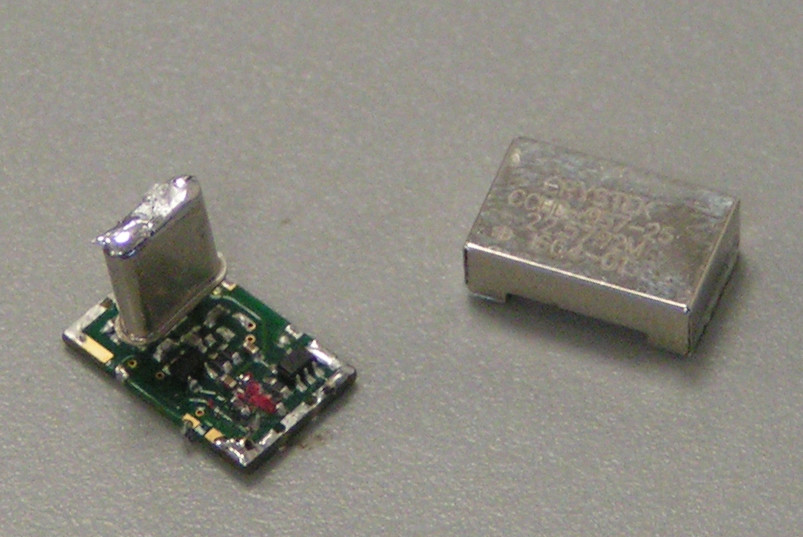
ppa ocxo
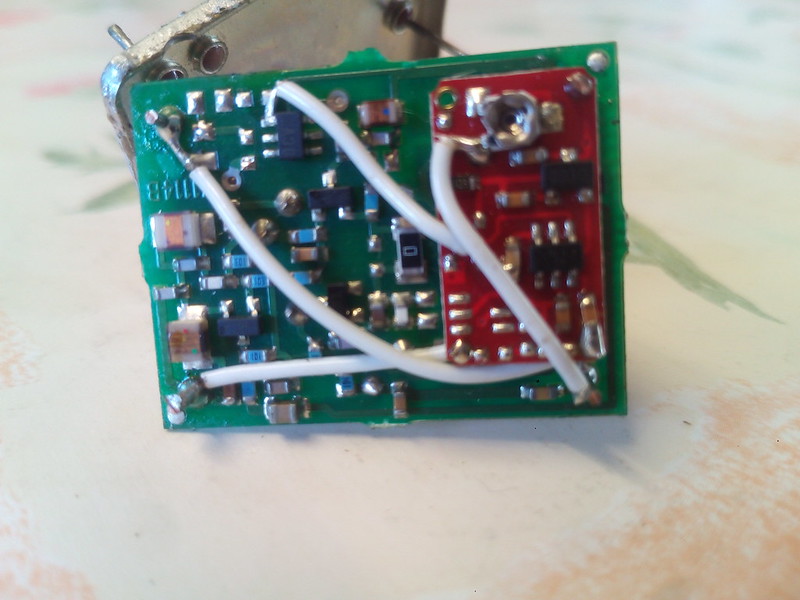
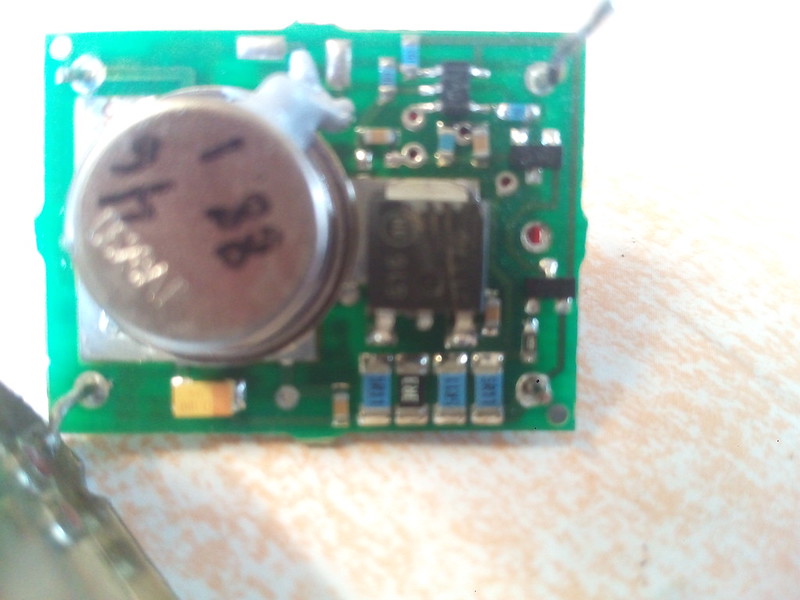
it seems the circuitry is there its just out of sight
id bet the power regulation section of these boards is more than half that circuitry and in reality the parts in the signal path is pretty minimal
with lifepo4 with it been discrete we have the ability to experiment with different power implementations
id be surprised if we couldnt get a substantial improvement over how good it is stock with a little modding
Re: Anyone interested in good clocks
Posted: Thu Jul 28, 2016 10:39 am
by nige2000
interesting side conversation on that thread on diya that seems to make a bit of sense to me
as i find that Delta sigma dacs cant hold my attention or draw me in any more
"no reality factor" of sorts
I'm not sure this is the reason why multibit dacs are coming out of the market. In my opinion the main reason is the cost of the manufacturing process (and their size).
Also Delta Sigma DACs are moving from 1 bit to multibit.
Since Delta Sigma are essentially "noise generators", they need high oversampling and noise shaping, that means high clock frequency. While a TDA1541 can operates at a few MHz clock without generating noise.
A 6 Mhz clock has far better phase noise than a 50 or 100 Mhz.
I agree with Lynn Olson, I had the same subjective impression comparing multibit R2R DAC with Delta Sigma
dac
kinda makes me wonder what a non upsampled r2r could sound like
probably why lifepo4 works so well with soekris as a noise suppressor
oh the link
http://www.positive-feedback.com/Issue65/dac.htm
Re: Anyone interested in good clocks
Posted: Thu Jul 28, 2016 10:54 am
by jkeny
nige2000 wrote:
does this mean the stock boards do not use the required crystals and have to upgrade?
There's a difference between AT cut & SC cut crystals (this gets into crsytallography & stability of vibration of the molecular structure) - they say SC cut crystals are even lower phase noise. I don't know if we are into the land of ever diminishing returns though - how low do we need to go?
rickmcinnis wrote:This could be good but my instincts are that there is too much circuitry.
yes i usually be thinking around the same lines, but see pics below of whats under oscillator hood
it seems the circuitry is there its just out of sight
id bet the power regulation section of these boards is more than half that circuitry and in reality the parts in the signal path is pretty minimal
with lifepo4 with it been discrete we have the ability to experiment with different power implementations
id be surprised if we couldnt get a substantial improvement over how good it is stock with a little modding[/quote]
Yes, like the Soekris DAC is a discrete DAC - this is a discrete clock & power supplies can be optimised.
There's really only a couple of major functions in clocks, AFAIK:
- make the crystal oscillate at the frequency it is designed for
- give it clean power
- ensure it is immune from outside influences
- change the sine wave oscillation to a square wave




